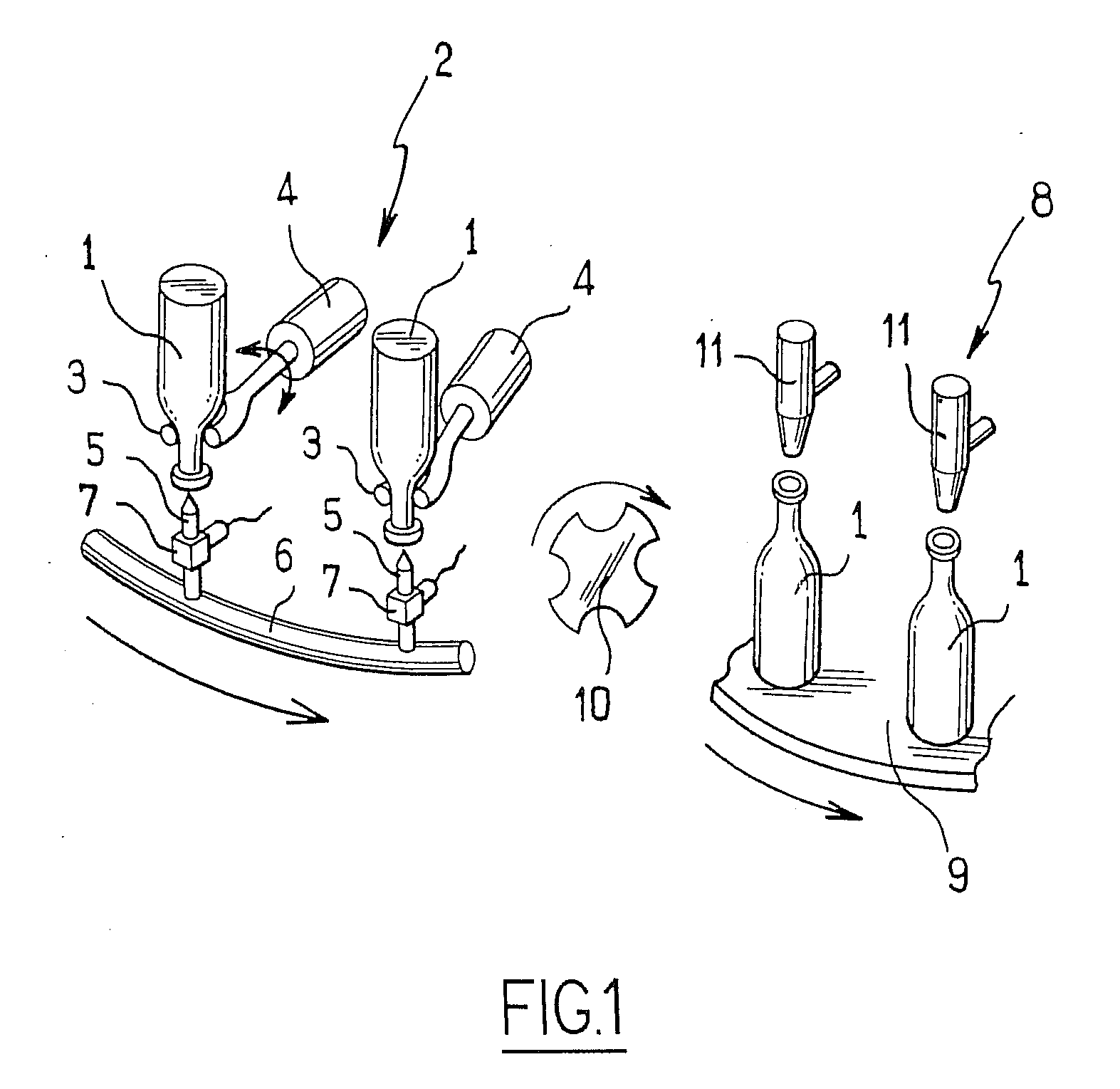Method of disinfecting containers with a disinfectant and prior heat treatment, and a corresponding installation
a disinfectant and container technology, applied in the direction of lavatory sanitory, cleaning process and apparatus, low-profile cleaning, etc., can solve the problems of affecting the operation of the method, and affecting the operation of the cleaning method
- Summary
- Abstract
- Description
- Claims
- Application Information
AI Technical Summary
Benefits of technology
Problems solved by technology
Method used
Image
Examples
Embodiment Construction
[0010]With reference to the figure, the method of the invention is advantageously implemented by initially introducing containers 1 into a disinfecting installation comprising a heat treatment station having container supports such as forks 3 suitably connected to control motors 4 for causing the containers 1 to pivot between an upright position (not shown in the figure) and an upside-down position, as shown in the figure, in which the containers 1 are brought over nozzles 5 for delivering steam, each nozzle 5 being connected to a feed manifold 6 via a controlled valve 7.
[0011]In a preferred implementation of the invention, the method comprises a heat treatment step prior to a step of treatment by means of a disinfectant mixture that comprises peracetic acid, hydrogen peroxide, acetic acid, and water. The heat treatment is performed by projecting steam at 140° C. into the insides of the containers 1 for two seconds while the containers are held upside-down.
[0012]This position for th...
PUM
| Property | Measurement | Unit |
|---|---|---|
| temperature | aaaaa | aaaaa |
| temperature | aaaaa | aaaaa |
| temperature | aaaaa | aaaaa |
Abstract
Description
Claims
Application Information
 Login to View More
Login to View More - R&D
- Intellectual Property
- Life Sciences
- Materials
- Tech Scout
- Unparalleled Data Quality
- Higher Quality Content
- 60% Fewer Hallucinations
Browse by: Latest US Patents, China's latest patents, Technical Efficacy Thesaurus, Application Domain, Technology Topic, Popular Technical Reports.
© 2025 PatSnap. All rights reserved.Legal|Privacy policy|Modern Slavery Act Transparency Statement|Sitemap|About US| Contact US: help@patsnap.com


